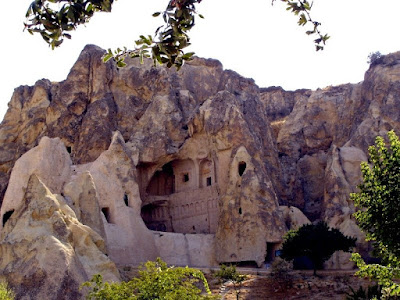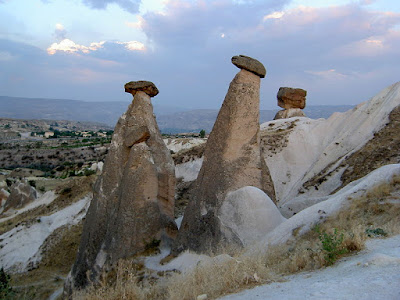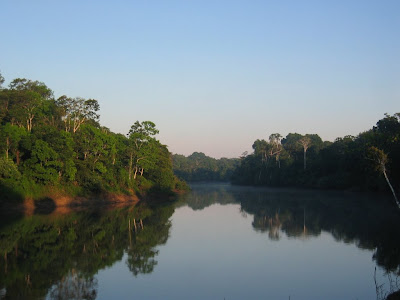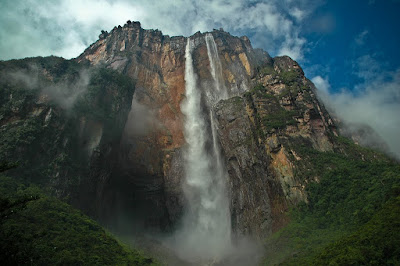
A beautiful rock formation of Cappadocia. Source: http://flickr.com/photos/terdata
This region's amazing landscape is largely underlain by sedimentary rocks formed in lakes and streams, and ignimbrite deposits erupted from ancient volcanoes approximately 9 to 3 million years ago (late Miocene to Pliocene epochs). The volcanic deposits are soft rocks that, for hundreds of years, the people of the villages at the heart of the Cappadocia Region carved out to form houses, churches, monasteries and underground cities. Forces of erosion have shaped the incredible and unique Cappadocian tuff-coned landscape. This nature and man made structures now make a popular tourist destination.

A view of Cappadocia Rock Formation. Source: wikipedia.org

A church carved from the rock in Cappadocia. Source: flickr.com/photos/morgui

Uçhisar Hill and Castle, the highest point in Cappadocia. Source: wikipedia.org
Cappadocia is also famous for it's fairy chimney - a conical rock formation which consist of a cap of hard rock resting on a cone-shaped pinnacle of softer rock

Fairy chimneys in Cappadocia. Source: wikipedia.org

Fairy chimneys in Cappadocia. Source: flickr.com/photos/morgui





























